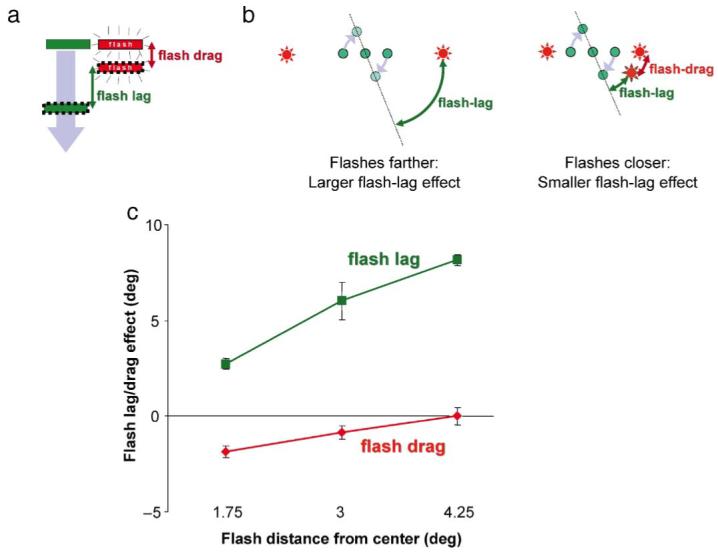Figure 3.

The FDE, which dilutes the FLE, occurs when motion signals shift the localization of nearby objects. (a) The measured FLE is the perceived offset between the motion-shifted moving object and the motion-shifted flash. When the flash is interpreted as part of the moving object, the flash drag is maximal and the flash lag is reduced to zero. The cartoon represents λflash = 0.2 (see text). (b) Reexamining the Baldo and Klein (1995) result. Stimulus: a spinning “bar” composed of three dots rotates around the central dot. At a random time, two end-segment flashes occur (red, 13.7 ms duration) at one of three random distances from the center point. In one block of trials, observers used a method of adjustment to change the position of the flashes until the bar and flashes appeared in alignment (this measured the FLE). In the other block, observers saw the same stimulus but were asked a different question: Now, they adjusted the flashes until the flashes appeared horizontally aligned with a continuously present landmark line on the screen (this measured the FDE). The order of the blocks was randomized across observers. Direction of spinning dots was reversed for half the trials. (c) As the FDE increased, the FLE decreased. Method of adjustment, three trials per condition, n = 4.
